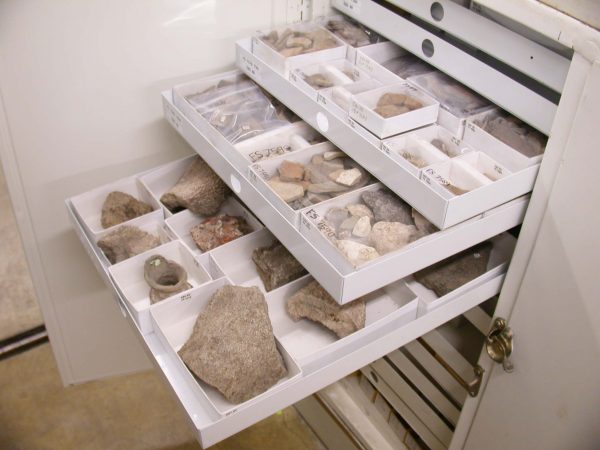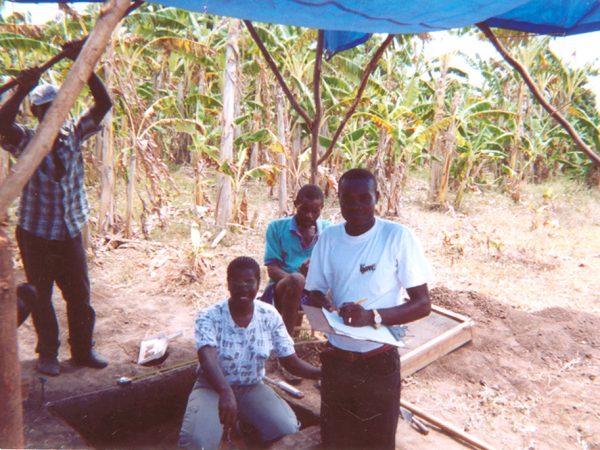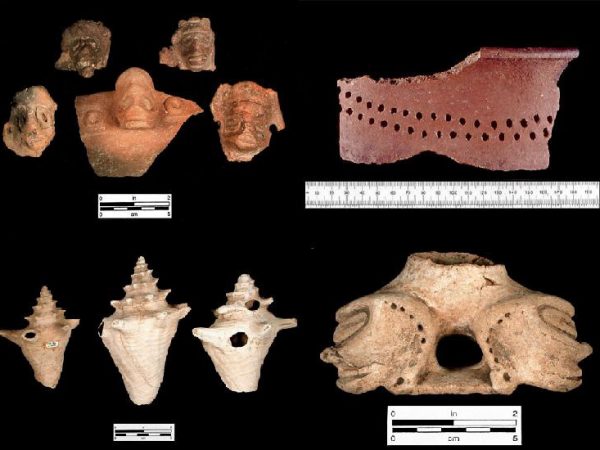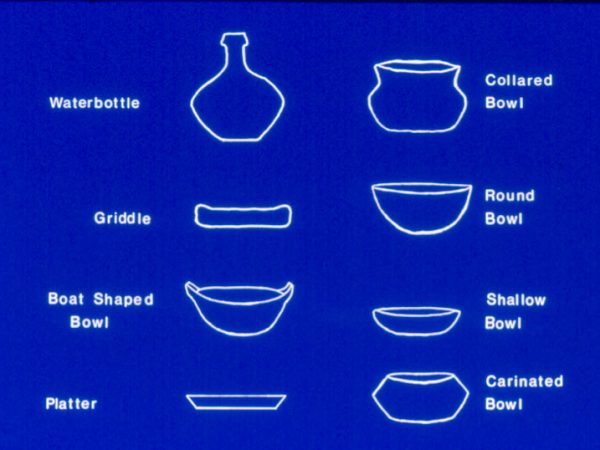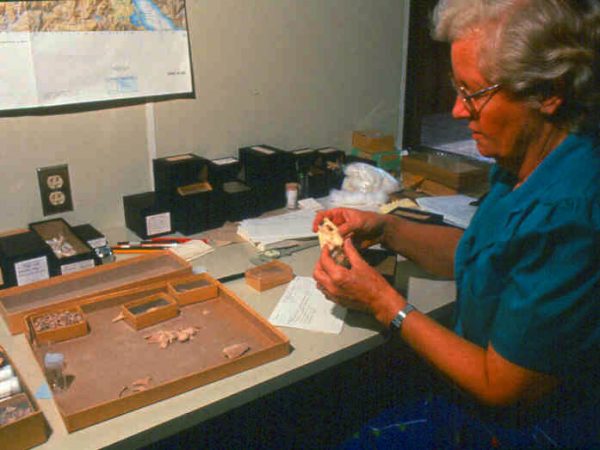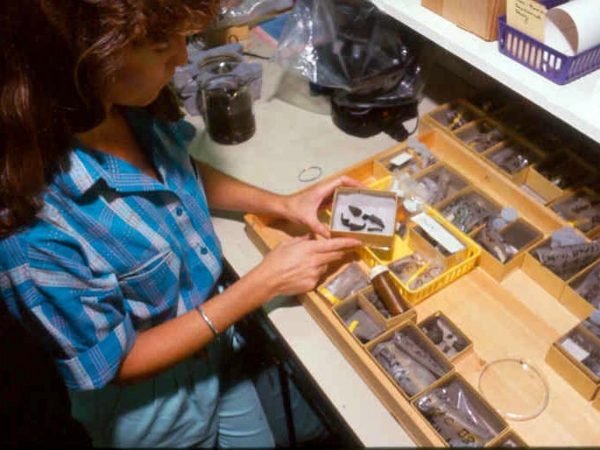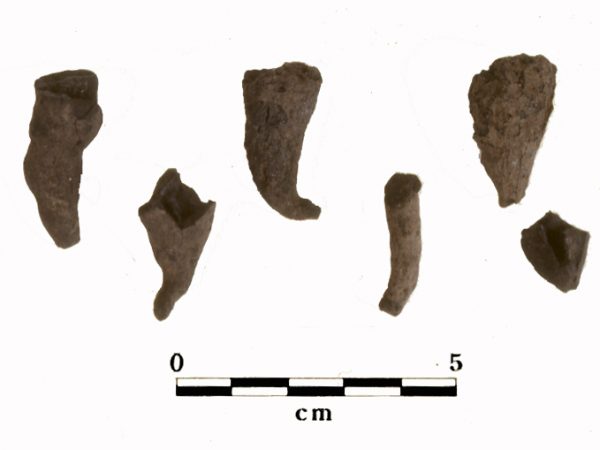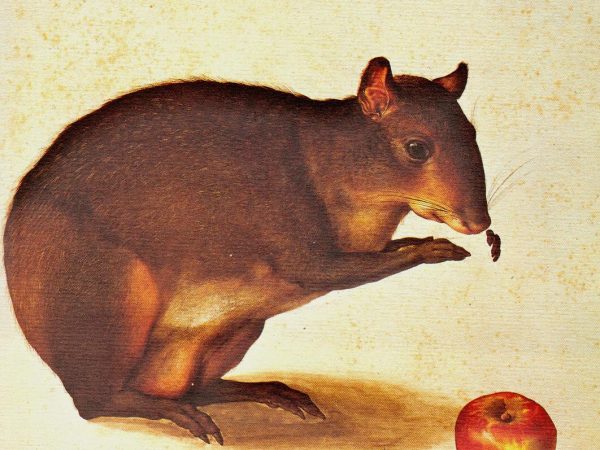The materials excavated from En Bas Saline are currently being curated and maintained on behalf of the Haitian government by the Florida Museum of Natural History, through a cooperative agreement between the University of Florida and the Bureau National D’Ethnologie D’Haiti.
The agreement also includes opportunities for student training and research , as well as instruction in curation and laboratory methods.
119,169 artifacts have been recovered through excavation, and of these, 73,303 came from undisturbed contexts below the contemporary plowzone. Examples can be seen in the artifact gallery.
Items related to food preparation and food consumption (mostly ceramic vessels) accounted for more than 98% of all artifacts. These were almost exclusively Carrier pottery, a local variant of the Chican-Ostionoid pottery subseries, distinguished by specific kinds of paste, manufacturing techniques, decorative modes and vessel forms.
Other categories of artifacts included ornaments and beads in shell, bone and stone, fishing weights, cooking griddles, shell and bone tools, and stamps for making patterns on cotton cloth. Complete artifact inventories can be found in the publications on En Bas Saline, listed below.
The material culture at En Bas Saline did not change significantly throughout it’s 300 year-long occupation. The same kinds of pottery and other items were found in the lowest through the highest excavation levels at the site. The most pronounced variation within the site was between the chief’s structure in the site center, and the non-elite structures around the site periphery. The cacique clearly had a more elaborate, diverse and abundant array of not only material goods, but of food. This supports and reinforced the marked status differentiation among Taíno classes.
 Curation of materials from En Bas Saline at the Florida Museum of Natural History
Curation of materials from En Bas Saline at the Florida Museum of Natural History Claudie and Charité , Bureau National D'Éthnologie student interns and crewmembers on the En Bas Saline project, 2003
Claudie and Charité , Bureau National D'Éthnologie student interns and crewmembers on the En Bas Saline project, 2003 Artifacts recovered from En Bas Saline
Artifacts recovered from En Bas Saline- White slipped Carrier water bottle top in the shape of a duck, En Bas Saline
 Taíno ceramic vessel forms
Taíno ceramic vessel forms
Faunal and Floral Remains
Faunal remains were studied under the direction of ElizabethWing and her students at the Florida Museum of Natural History This was done not only to reconstruct Taíno diet, but also to identify post-1492 deposits. European animals such as pig and rat were often the only indication that that a particular soil layer or feature was deposited after 1492.
The animal bones from all 814 excavated proveniences were sorted to look specifically for European species, and remains from pigs (Sus scrofa), mice (Mus musculus), rats (Rattus rattus) and/or cats (Felis domesticus), all unequivocal indications of European introduction, were found in 17 undisturbed sub-plowzone features.
The remains from 62 undisturbed contexts were further analyzed using detailed measurements and allometric studies in order to characterize Taíno subsistence. The Taíno of En Bas Saline depended on the resources of the sea- fish and shellfish – for protein. In precontact times, they captured and ate hutias – small, guinea pig-like rodents, but this diminished considerably after contact. The residents of the central mound – presumably caciques- ate the largest fish, and had many more kinds of animal foods than did the non-elite residents of the rest of the site.
Plant remains were studied by Lee Ann Newsom, who identified plants cultivated by the Taíno (manioc tubers, corn, peppers, beans, guava, soursop, primrose), as well as those gathered in the area (mostly grains and grasses). Newsom’s work has identified the earliest corn yet found in the Caribbean (dating to between AD1200- and AD 1300).
